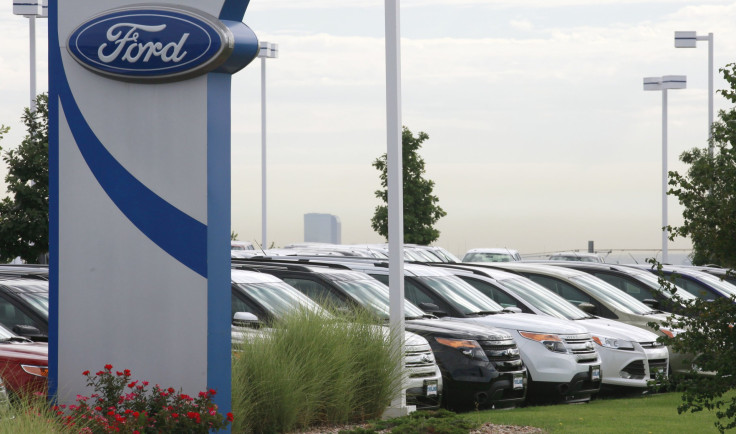September 2013 US Auto Sales Adversely Affected By Timing; For The Third Quarter US Auto Sales Are Expected To Be Up 9%

The dwindling days of summer amid the annual back-to-school frenzy don't make for a strong new-car-sales climate, and this September was worsened by the timing of the important Labor Day holiday sales events, when dealers really kick off their inventory-clearing offers. The month had 28 selling days for the first time since November 2009.
So what did this mean for automakers?
“[August] was like having chocolate cake and ice cream instead of just the cake,” said Jessica Caldwell, senior analyst for automotive pricing and information site Edmunds.com. “It caused a famine in September.”
As automakers wrapped up reporting their monthly sales figures on Tuesday, it looks like U.S. buyers purchased 1.13 million cars and light trucks, sending the seasonally adjusted annualized rate -- the key metric that gauges the monthly state of the auto industry -- to between 15.2 million and 15.3 million, or under the 2013 estimate of about 15.5 million. Last year, total auto sales touched 14.5 million.
But September’s SAAR is not to be taken too seriously. The third quarter is typically the strongest, and it looks like the auto sector sold about 4 million vehicles in the past three months, about a 9 percent gain, according to Edmunds, driven by strong incentives, low interest rates and an aging fleet of American cars and trucks that will continue to be replaced well into next year.
Ford Motor Co. (NYSE:F) reported the only overall monthly gain of the top three North American and top three Japanese automakers, while General Motors Co. (NYSE:GM), North America’s largest automaker, was struck by some supply problems for its top-selling pickups and was affected like the other car companies by the August-September anomaly that shifted a significant portion of sales into the earlier month.
GM typically far outsells its competitors in the U.S. market because it has so many brands, but last month Ford sold only 2,049 fewer vehicles than GM, putting it in a virtual tie.
There weren’t surprises in the figures reported by the big three Japanese automakers. They all declined in September after strong August performances.
“The Japanese automakers fared better than GM, increasing their market shares,” said Jesse Toprak, auto market analyst at TrueCar.com. “On top of that, if you look at the average transaction prices for Asian automakers, they are all going in the right direction.”
Honda, Toyota and Nissan all managed to increase the average transaction price for their vehicles. Honda and Nissan managed to raise their prices in September by more than 3 percent each compared to the same month last year, while still under the industry average of $31,854. At the same time, all three of these automakers significantly reduced their incentive spending, such as rebates, in Honda’s case by a whopping 42 percent to $1,431 per transaction, the lowest in the industry, according to TrueCar.com. Meanwhile, while Ford had a good month relative to its competitors, it raised incentive spending over 15 percent to $2,878. The more a company spends luring customers, the narrower the profit margins.
“With the Japanese automakers fully recovered from the 2011 tsunami, and with U.S. automakers back to full strength after their restructuring efforts, the market seems to be settling down,” said Karl Brauer, senior analyst at Kelley Blue Book. “The gains made by Hyundai, Kia and Volkswagen between 2010 and 2012 are now being challenged by the resurgent domestic [U.S.] and Japanese manufacturers.”
Volkswagen was a big loser last month, with sales down more than 12 percent from September 2012, and it has been hit this year in the U.S. market by the resurgence from its competitors.
The takeaway: Don’t read too much into September U.S. auto sales. Looking at quarterly figures eliminates the August-September anomaly and shows a U.S. auto sector in line to meet the expectations of selling more cars this year than last and well on its way to prerecession numbers as early as next year.
© Copyright IBTimes 2024. All rights reserved.






















